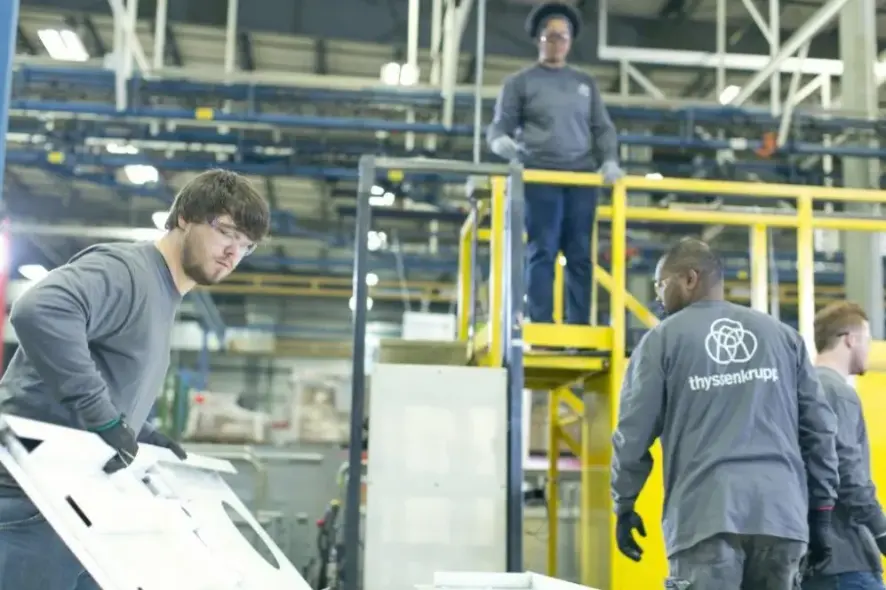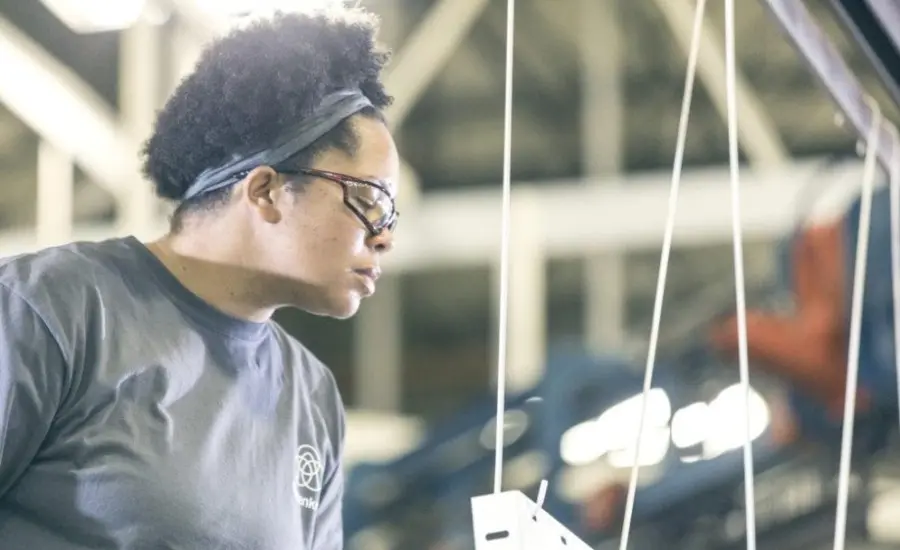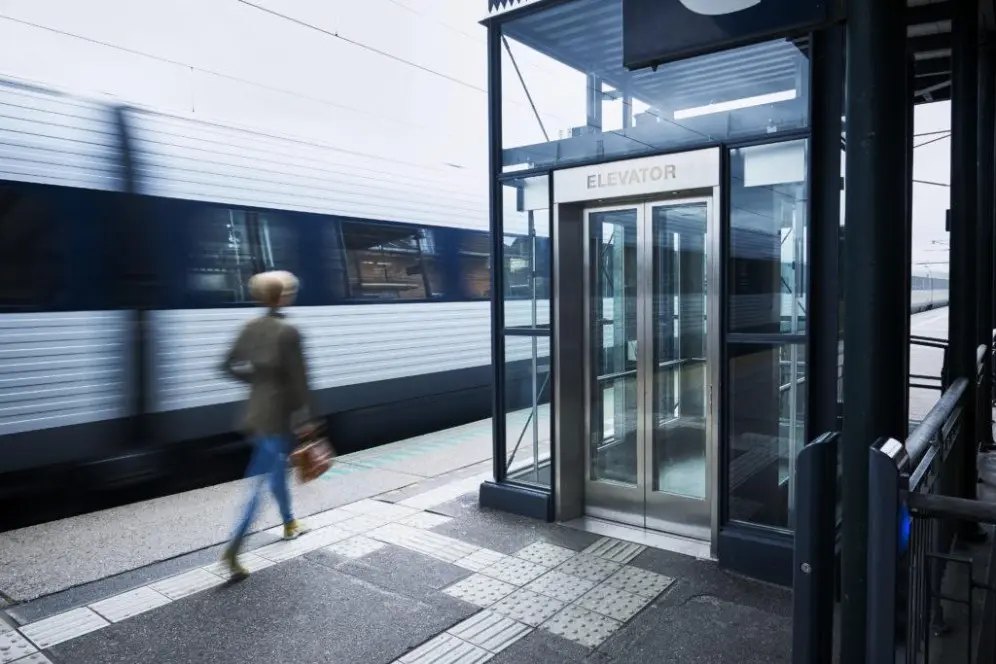This is #newtk: How this team redefined the performance of their production chain

Elevator Technology
we.online
For thyssenkrupp’s future, our colleagues worldwide are working to make our company more flexible, efficient and powerful. Our new strategy #newtk focuses on this performance idea. An example: in the USA, years of experience meet innovative thinking: Our colleagues at the production plant for hydraulic jacks in Middleton, Tennessee have optimized their production chain as part of the "Jackline Optimization Project" to such extent that they can now handle up to five times more orders per day.
In the past, our Tennessee-based hydraulic elevator components team had produced hydraulic telescopic jacks in various sizes for stock to handle large order volumes. However, this batch production proved to have room for long-term improvement. In order to improve the production chain, the Middleton team came up with an impressive optimization concept - not to mention their commitment and outstanding teamwork, which they demonstrated every day throughout the project.
Video at YouTube: Jack Line Optimization Part 1

John Keller tells us about the beginnings of the optimization project: "As a team, we looked at those steps that had no added value for our production. Then we put together teams from the different departments. Whether welders or accountants - everyone was involved. Each working group tried to find seven possible solutions for existing difficulties and flaws".
This method is called "7 Ways" and is used to boost the creativity of a team in which seven different solutions to a problem are worked out in smaller groups. The high number of requested solution proposals makes the method so productive, as otherwise no more than three solutions are proposed on average. Thus, the 7 Ways take the participants out of their comfort zone and draw from their creativity.

An order usually involves four different cylinders for a telescopic hydraulic jack at Middleton. Before optimizing the production chain, the employees selected the individual components and transported them to the production floor. This may not sound unusually cumbersome at first, but given the size of the individual components, John Keller, Seth Gowan (Multi Machine Operator) and their team had to use cranes to lift the required hydraulic jack cylinders and transport them to the production hall.
"When we produced in batches, we needed long lead times to manufacture and provide the cylinders for an order. We started production a week in advance and each component was mass produced to cover other orders," recalls John Keller at our Middleton facility. It was time to restructure the entire production chain. Following optimization, 10-15 additional orders a day leave the Elevator plant - efficiency has increased fivefold.
Prior to the realization of the Jackline Optimization Project, the production floor was packed with components for assembly. Today it looks completely different: Thanks to automated size recognition and program selection, each order is produced individually, so that only those components that the assembler needs for a single order - i.e. a hydraulic jack - lie on the assembly benches.
This means that our assemblers in Middleton no longer have to pick and choose the components they need to complete an order. They are also spared the time-consuming transport with crane systems. John Keller sums up what this means for the efficiency of the production chain: "We were able to reduce the required time to complete a telescopic hydraulic jack from one week to only 250 minutes".
Seth Gowan told us that the Jackline Optimization Project had changed the dynamics within the team for the better. "Today, we all communicate with each other. We are now more of a unit." In order to increase the efficiency of the production line, each employee is assigned to a production step in his or her area of expertise. This requires a well-functioning and active communication and cooperation among each other in order to ensure that the production chain functions flawlessly. For John Keller, the differences are clear to see: "Previously, everyone was an island in their own field. Today, everyone is connected to each other."
Not only did the optimization strategy help the Middleton team to improve their teamwork, but it also enabled them to shape their own working environment. "The Jackline Optimization Project has encouraged us to not simply accept things that don't work optimally, but instead to work together to improve our daily work routine," says project manager John Keller, highlighting the proactive attitude of his Middleton team.
The more dynamic teamwork and the increased efficiency of the entire hydraulic jack production line show that the Jackline Optimization Project was successful. It was an investment in the performance of our local U.S. team, whose potential, creativity and commitment achieved the best possible result - both economically and on a personal level.
A look into the future: What are hydraulic lifts used for?
Rope lifts are on everyone's lips, but what are hydraulic lifts actually used for? "Our specific hydraulic jacks can transport passengers up to six floors high. Hydraulic elevators have a less complex structural design and integrated safety features," explains John Keller.
The limitation to a transport height of six floors makes hydraulic elevators ideal for installation in medium-sized office buildings and hotel complexes, as well as for mobility solutions that only have to cope with slight differences in height. These are, for example, elevators on train platforms. With increasing urbanization, elevators of this type will become much sought after.
